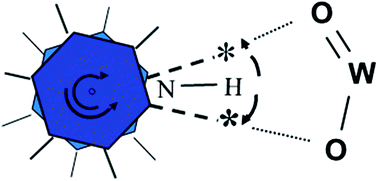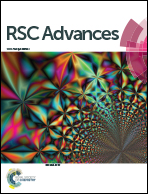Unusual IR ring mode splittings for pyridinium species in H3PW12O40 heteropolyacid: involvement of the δNH internal mode†
Abstract
This study aimed at investigating the well-known infrared band splitting affecting the ν8b and ν19b modes of pyridinium species formed by pyridine absorption in tungsten heteropolyacid H3PW12O40, first reported 30 years ago but the origin of which has not yet been satisfactorily explained. To this aim, IR spectra of isotopically substituted pyridinium species h5-PyH+, h5-PyD+, d5-PyH+ and d5-PyD+ were analysed and compared in the 1700–1300 cm−1 range. DFT calculations were used to assign the IR bands of the 4 isotopomers in this range. The results clearly showed that the splitting specifically affects pyridinium modes presenting a marked δNH character, namely the asymmetric ν8b and ν19b modes of h5-PyH+ and d5-PyH+ species. The Davydov nature of the splittings was eliminated upon using mixtures of isotopic pyridinium species. They are explained by an interaction between the δNH internal mode with the in-plane pyridinium ring frustrated rotation in two potential wells, associated with a tunneling effect.


 Please wait while we load your content...
Please wait while we load your content...